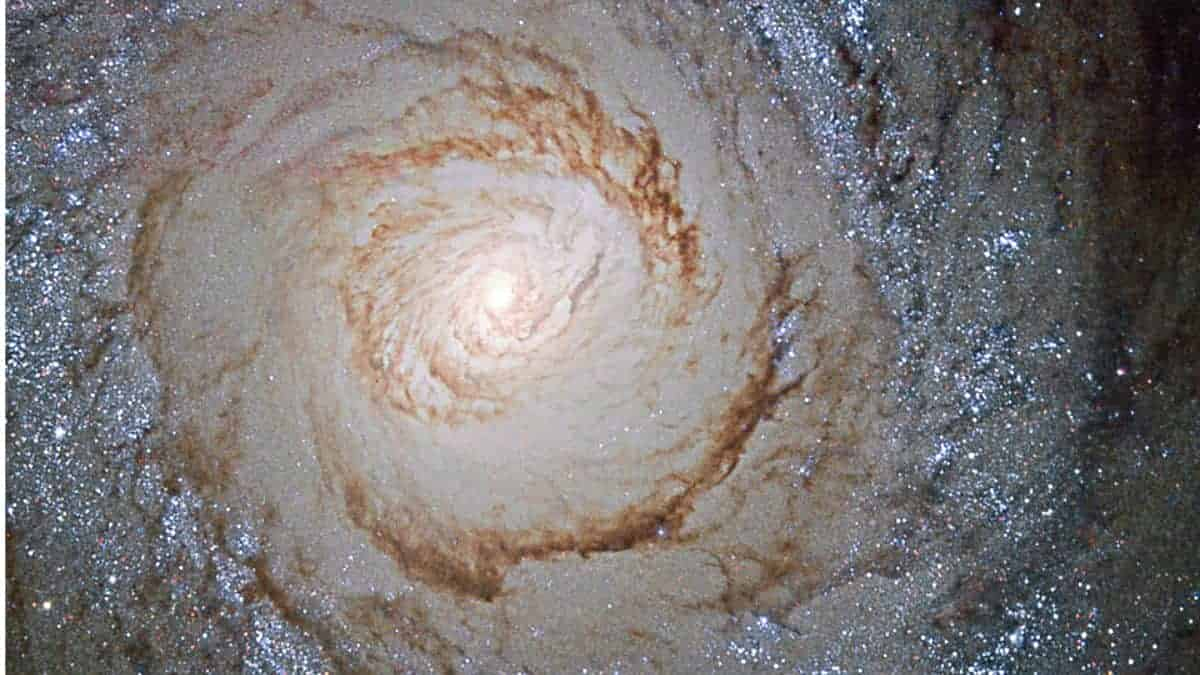NASA’s Astronomy Archive reveals a detailed image of the starburst galaxy M94 taken from Hubble

Messier 94 is situated in the small northern constellation of the Hunting Dogs about 15 million light-years away from Earth. This particular cat’s eye-like galaxy has become the target of astronomers. The spiral galaxy is about 30,000 light-years across with spiral arms revolving around the gaseous disc structure. NASA has enlisted the galaxy M94 to its Astronomy Picture of the Day Archive, viewed from the Hubble Space Telescope.
The galaxy has a bright nucleus, prominent inner dust lanes, and the most remarkable bluish ring of young massive stars. The galaxy is called a starburst galaxy as it has a ring of young massive stars circling it. According to the astronomers, the ring is formed due to the pressure wave going outward from the galactic center compressing the gas and dust in the outer region. As the matter compresses, gas collapses into a dense cloud where gravity pulls the gas and dust towards it until the temperature and pressure are high enough for a star to be born.
M94 is named after the French astronomer Charles Messier who noticed the presence of nebulous objects which he mistook for comets initially. Later he cataloged the name of the nebulous object along with other 100 cosmic objects and the catalog is recognized as the most important document of Deep Space objects. However, M94 was later discovered by Pierre Mechain on March 1781 from the catalog of objects created by Messier. An astronomer said regarding its discovery while reading the catalog that “in the center it is brilliant and the nebulosity is a bit diffuse. It resembles the nebula which is below Lepus, No. 79; but this one is more beautiful and brighter.”
Messier 94 was originally categorized as SAB or an intermediate spiral galaxy for having an extremely bright nucleus according to the galaxy morphological classification system devised by Gerard Vaucouleurs. The galaxy is characterized by the formation of a ring structure made out of young blue massive stars known as blue young star clusters which makes the galaxy apparently rare.
According to the astronomer Ignacio Trujillo in his study of M94 he said, “We have conducted a deep multiwavelength analysis (0.15-160 ?m) to study the outer region of the nearby galaxy M94. We show that the non-optical data support the idea that the outskirts of this galaxy are not formed by a closed stellar ring (as traditionally claimed in the literature) but by a spiral arm structure. In this sense, M94 is a good example of a Type III (anti-truncated) disk galaxy having a very bright outer disk. The outer disk of this galaxy contains ~23% of the total stellar mass budget of the galaxy and contributes ~10% of the new stars created showing that this region of the galaxy is active. In fact, the specific star formation rate (SFR) of the outer disk (~0.012 Gyr–1) is a factor of ~2 larger (i.e., the star formation is more efficient per unit stellar mass) than in the inner disk. We have explored different scenarios to explain the enhanced star formation in the outer disk. We find that the inner disk (if considered as an oval distortion) can dynamically create a spiral arm structure in the outer disk which triggers the observed relatively high SFR as well as an inner ring similar to what is found in this galaxy.”
NASA’s Astronomy Pictures of the Day Archive provides a list of cosmic objects including images and descriptions is a handy modern time catalog for astronomy lovers.


